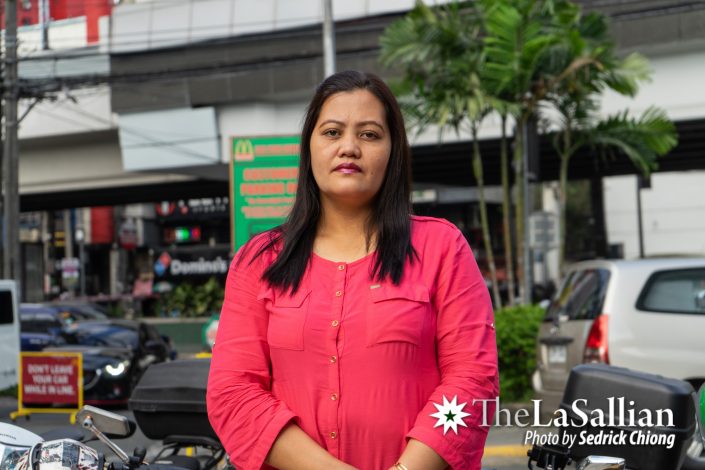A year after former Manila Mayor Joseph Estrada enacted a city ordinance to enforce curfew hours, Mayor Francisco “Isko Moreno” Domagoso began strictly reimplementing it. City Ordinance No. 8547, a more lenient version of a previous ordinance that the Supreme Court nullified in 2017, prohibits children below 18 years of age from wandering the city’s public spaces from 10 pm to 4 am. Violators face imprisonment of up to six months and fines as high as P5,000, with the highest penalties being imposed on parents and guardians whose children are below 12 years of age. On the eve of its implementation last September 2, more than 400 minors were taken into police custody.
A little before midnight of that same evening, Janet Garcia—a pantry cook working in a Quezon City restaurant—was on her way home from her 11 pm shift. Arriving home, she noticed her son was still outside. Unaware of the curfew’s implementation, she didn’t think much of it; her son had often stayed at computer shops late into the evening. But at half past one in the morning, neighbors approached her house, bearing news: “Ate Janet, yung anak mo, kinuha ng pulis.”
(Janet, the police took your son.)
The arrest
At 10 pm, 14-year-old Joseph invited his friend to play at a computer shop in Mendiola. They knew the place well, having spent hours engrossed in video games or assignments. Nearly two hours had passed, and the pair were finishing one last game before the final minutes of their computer rentals ticked away. Even this late into the night, the computer shop was alive—filled with people and noise.
It was past midnight when the police raided the computer shop. They came in full force—12 uniformed police officers, armed with guns and handcuffs. Joseph and everyone else stood in stunned silence. Recalling her son’s story, Garcia says the officers barked orders: “Labas! Sakay dito sa sasakyan!”
(Out! Get in the car!)
“Tapos yung anak ko, umiiyak daw,” Garcia continues. “‘Ayaw kong makulong,’ sabi [raw] niya.”
(My child had apparently been crying. “I don’t want to go to jail,” he had said.)
The detention
The children, still shaken by what had transpired, were taken to a hospital for drug tests and preliminary interviews. There, Garcia caught up to her child and the police officers. “Sa pulis na babae po, sinabi ko, ‘Ma’am, puwede ko po kunin?’ Sabi, ‘Hindi, bukas na. Kasi dadalhin natin sa RAC,’” she recalls.
(I asked a policewoman, “Ma’am, could I please take him home?” She said, “No, wait until tomorrow. We’re bringing them to RAC.”)

RAC, the Manila Reception and Action Center, is a government-run street children shelter. In prior years, RAC had been criticized for its abysmal and violent living conditions, highlighted by the horrific case of “Frederico”—a shelter resident found lying naked on the concrete floor, bones protruding from severe malnutrition.
By 3 am, the children had arrived at the infamous RAC. Here, they were placed behind bars. The conditions in the overcrowded cells were harsh; the children were only given half a cup of rice, a palm-sized slice of ham, and a glass of water half-filled to last the day. Garcia arrived early in the morning.
“Umiiyak [lahat]. ‘Yung iba, walang tsinelas. Tapos ‘yung iba, nakahubad lang. ‘Yung mga [galing] Tondo, sabi [ni Joseph]. Marami [roon] babae. Mga 11 years old,” she shares.
(They were all crying. Some had no slippers, while the others were naked. [Joseph] said those were the ones from Tondo. There were many girls, most of them just 11 years old.)
Eventually, the children were transferred to a center under the Department of Social Welfare and Development (DSWD). As they boarded the vans, Garcia caught sight of her son. She narrates, “Noong nandoon na sila sa sasakyan, ang dami nila, parang sardinas na. Kumakaway na siya, tapos nakaputi na-istripe. Sabi niya, ‘Ma, kunin niyo ako [rito].’”
(There were a lot of children in the vehicle, packed like sardines. Wearing a white striped shirt, Joseph waved at me and said, “Ma, please come and get me.”)
At last, in the DSWD center, Garcia regained custody of her son after she presented a valid birth certificate. Both of them were asked to sign written promises not to let the incident happen again, facing imprisonment and large fines should they fail to comply.
The aftermath
Joseph was quiet for days afterwards. He refused to go to school for fear of being arrested. He hardly ate and spent most of his time atop his double-deck bed, occasionally coming down to watch TV. “Hindi na siya lumabas. Mga tatlong araw, nakahiga muna siya. Yung anak kong dalaga, sabi niya, ‘Bakit ka pa lumabas kasi? May curfew na ngayon!’” Garcia recounts. “Tapos ‘di na siya nagsasalita.”
(He no longer leaves the house. For three days, he was just lying there. My teenage daughter told him, “Why did you even leave the house? There’s already a curfew!” He no longer said anything afterwards.)
Despite the young Joseph recovering eventually—his grandmother accompanying him on his return to school—a pervasive air of fear hung around the community, with police officers continuing to prowl the streets as the hour grew late. Garcia believes the ordinance is too restrictive, noting that the early curfew hours pose a challenge for working single mothers such as herself, who may not be at home to watch over
their children.
As these arrests continue, young minds and communities remain at risk of developing a lasting fear of the police. This unease is one that the city government must address before they can attempt to rebuild the hope of a brighter, safer Manila—especially for the youth.
